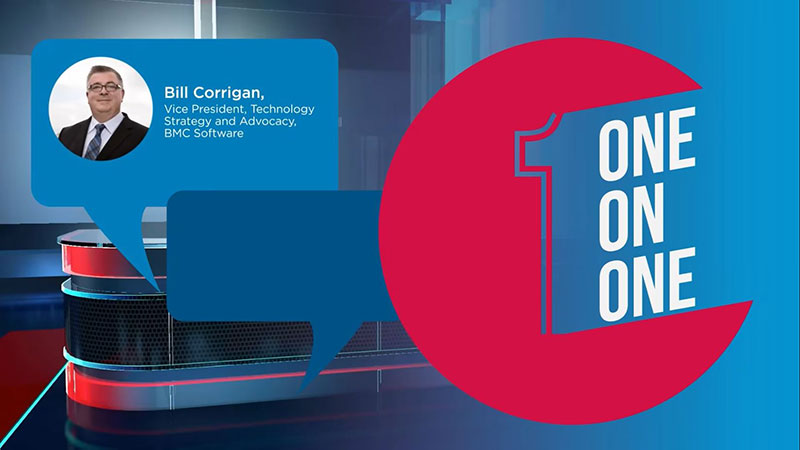
Digital twin capabilities have been growing at Federal agencies in recent years, deployed for everything from fighting wildfires to digitally designing aircraft for NASA. A 2021 survey found that 24 percent of Federal executives said their organization was experimenting with digital twin technology – which is made possible by the Internet of Things (IoT) – while 63 percent expected their organization’s investment in intelligent digital twins to increase over the next three years.
In a recent MeriTV episode, BMC Software’s Bill Corrigan attributed the trend to recent advancements that have made digital twins a more realistic option for government and the private sector.
“This is not a new concept,” said Corrigan, a leading expert on digital twins. “We’ve been doing simulations for a very long time. The big change over the past few years is the ability to do this at scale, with real-time data feeds applying machine learning algorithms, being able to process additional algorithms in the cloud and make adjustments, and give accurate digital pictures of the object on the fly.”
The IoT has led to the development of digital twins by enabling data collection with sensors on numerous devices, which makes it possible to gain new insights from the convergence of information technology and operational technology data. Organizations can reap numerous benefits from this data convergence, including improved operational efficiency and less downtime for employees.
Corrigan outlined a variety of ways in which digital twins are bringing value to government, with both military and civilian applications, including in areas “where any government agency or department is resembling a manufacturer or other private sector entity.”
As an example, he cited his work several years ago with a government agency using digital twins to predict when a piece of an aircraft would fail. “We were collecting data [in] real time from the actual aircraft as well as some of the auxiliary technologies around the flight line,” Corrigan said. “That digital twin was then tied into their supply chain and their parts reorder system. So it freed up a lot of the maintenance personnel to really concentrate on the outlier issues or do more of their job, reducing the downtime of the aircraft.”
At a military base outside of the United States, Corrigan said he worked on a digital twin of a warehouse, which led to numerous efficiencies, including automated asset tracking and personnel deployment and streamlined reordering.
On the civilian side, Corrigan said there are hundreds of examples of digital twins benefiting cities around the world, such as Rotterdam in the Netherlands, which is using a digital twin tied to IoT sensors to stimulate energy usage, traffic flow, and climate impact.
Going forward, Corrigan said he sees increased adoption of digital twin technologies for a variety of Federal agencies, including the Department of Veterans Affairs, which “could use digital twin technologies to model out processes and facilities to better serve veterans.”
Whether it be for government or industry usage, he advised a careful and methodical approach. “What I tell every one of my customers or clients is ‘Don’t try to do it all at once,’” Corrigan said. “Start with a very specific use case. I’ve talked to cities or government agencies, and we’ll do brainstorming and we’ll come up with 60 use cases and they’ll say ‘Yeah, we want to do the first 15.’’’
“No,” he concluded. “Let’s start with one and make sure we can do that one well.”
For more advice on digital twin implementation, view the full interview.
